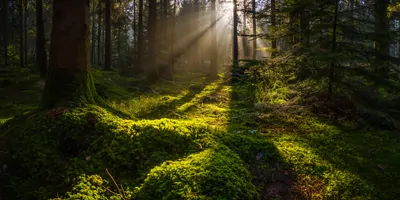New research published in the journal Science reveals that 44 percent of Earth’s land area—some 64 million square kilometers (24.7 million square miles) requires conservation to safeguard biodiversity.
The team, led by Dr. James R. Allan from the University of Amsterdam, used advanced geospatial algorithms to map the optimal areas for conserving terrestrial species and ecosystems across the world. They further used spatially explicit land-use scenarios to quantify how much of this land is at risk from human activities by 2030.
“Our study is the current best estimate of how much land we must conserve to stop the biodiversity crisis—it is essentially a conservation plan for the planet,” said lead author Allan. “We must act fast, our models show that over 1.3 million km2 of this important land—an area larger than South Africa—is likely to have its habitat cleared for human uses by 2030, which would be devastating for wildlife.”
The work has important policy implications since governments are currently negotiating a post-2020 global biodiversity framework under the Convention on Biological Diversity, with new goals and targets for biodiversity that will hopefully come into effect later this year. This will set the conservation agenda for at least the next decade, and governments will have to report progress against these targets on a regular basis.
“More than a decade ago, governments set a global target to conserve at least 17 percent of terrestrial areas through protected areas and other site-based approaches for improving the status of biodiversity and ecosystems,” explains co-author Dr. Kendall Jones, conservation planning specialist at the Wildlife Conservation Society. “However, by 2020 it was clear that this was not enough for halting biodiversity declines and averting the biodiversity crisis.”
A high-profile target being now discussed for 2030 is that nations should conserve 30 percent of their land through protected areas and other site-based approaches.
Added Jones: “While this is a great step in the right direction, our study suggests that more ambitious goals and policies to maintain ecological integrity beyond this 30 percent target are crucial. If nations are serious about safeguarding biodiversity and ecosystem services that underpin life on Earth, then they need immediately to scale-up their conservation efforts, not only in extent and intensity but also in effectiveness.”
The authors said the study provides essential information for conservation and development planning, and can help guide future national and global conservation agendas. They also emphasized that all the identified land should not necessarily be designated as protected areas, but rather managed through a wide range of strategies for species and ecosystem conservation, including other effective area-based conservation measures, and effective sustainable land-use policies when appropriate.
“Conservation actions that promote the autonomy and self-determination of people living on this land, whilst also maintaining ecological integrity are crucial,” said Allan. “We have many effective conservation tools available, from empowering Indigenous Peoples to manage their natural environment, through to policies that limit deforestation or provide sustainable livelihood options, and of course protected areas.”
Advanced Lab Management Certificate
The Advanced Lab Management certificate is more than training—it’s a professional advantage.
Gain critical skills and IACET-approved CEUs that make a measurable difference.
- This press release was originally published on the Wildlife Conservation Society website












